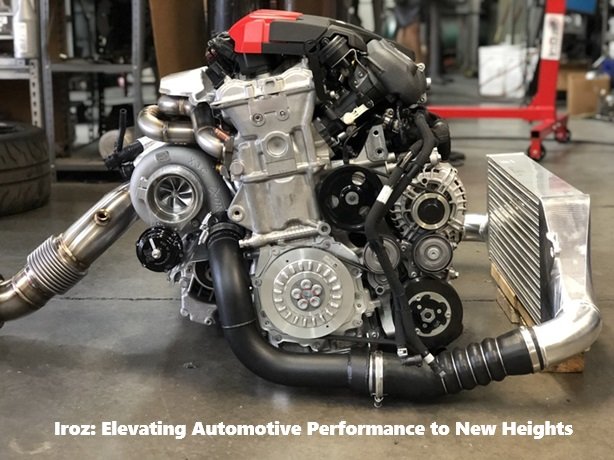Car insurance is an essential component of responsible vehicle ownership. It is legally required in most places and provides financial protection in the event of accidents, theft, or other unforeseen circumstances. However, understanding the intricacies of car insurance can be daunting, especially with the various types of coverage, policies, and legal requirements. This guide aims to demystify car-insurance, helping you make informed decisions and ensuring you are adequately protected on the road.
1. What is Car Insurance?
Car insurance is a contract between you and an insurance company that provides financial protection against losses resulting from accidents or other incidents involving your vehicle. In exchange for paying a premium, the insurance company agrees to cover specific types of damage or liability as outlined in your policy.
2. Why Do You Need Car Insurance?
Car insurance is crucial for several reasons:
- Legal Requirement: In most regions, having car insurance is mandatory. Driving without insurance can lead to fines, license suspension, and even legal action.
- Financial Protection: Car insurance protects you from bearing the full cost of repairs, medical bills, and legal fees in the event of an accident.
- Peace of Mind: Knowing that you are covered in case of an accident provides peace of mind, allowing you to drive without the constant worry of financial ruin.
3. Types of Car Insurance Coverage
Car insurance policies typically consist of several different types of coverage, each serving a specific purpose:
- Liability Coverage: This is the most basic form of car insurance and is required by law in most places. Liability coverage pays for the other party’s medical expenses and property damage if you are at fault in an accident. It typically includes:
- Bodily Injury Liability (BIL): Covers medical expenses, lost wages, and legal fees for injuries caused to others.
- Property Damage Liability (PDL): Covers the cost of repairing or replacing the other party’s vehicle or property.
- Collision Coverage: This covers the cost of repairing or replacing your vehicle if you are involved in an accident, regardless of who is at fault.
- Comprehensive Coverage: This protects against damage to your vehicle caused by non-collision events, such as theft, vandalism, natural disasters, and animal strikes.
- Personal Injury Protection (PIP): Also known as “no-fault” insurance, PIP covers medical expenses and lost wages for you and your passengers, regardless of who is at fault in an accident.
- Uninsured/Underinsured Motorist Coverage (UM/UIM): This coverage protects you if you are involved in an accident with a driver who either has no insurance or insufficient insurance to cover the damages.
- Gap Insurance: If your car is totaled in an accident, gap insurance covers the difference between the amount you owe on your vehicle and its actual cash value.
4. Factors Affecting Car Insurance Premiums
Several factors influence the cost of your car insurance premium:
- Driving Record: A clean driving record with no accidents or traffic violations will generally result in lower premiums.
- Age and Gender: Younger drivers, especially males under 25, tend to have higher premiums due to their higher risk of accidents.
- Vehicle Type: The make, model, and age of your vehicle can affect your premium. Luxury cars and sports cars typically cost more to insure.
- Location: Where you live can impact your insurance rates. Urban areas with higher traffic and crime rates often have higher premiums.
- Credit Score: In some regions, your credit score can affect your insurance rates. A higher credit score may lead to lower premiums.
- Coverage Amount: The amount of coverage you choose will directly impact your premium. Higher coverage limits or additional types of coverage will increase your costs.
5. Choosing the Right Car Insurance Policy
Selecting the right car insurance policy involves balancing cost with the level of coverage you need. Here are some tips to help you make an informed decision:
- Assess Your Needs: Consider your driving habits, the value of your vehicle, and your financial situation. If you have an older car, you might opt for less coverage, whereas a new or expensive vehicle may require more comprehensive protection.
- Compare Quotes: Get quotes from multiple insurance providers to compare rates and coverage options. Don’t focus solely on price; consider the reputation of the company and the specific coverage offered.
- Understand the Policy: Read the policy details carefully, including the fine print. Make sure you understand what is covered, what is not, and any exclusions or limitations.
- Consider Deductibles: A higher deductible can lower your premium, but it also means you’ll pay more out-of-pocket in the event of a claim. Choose a deductible that you can afford to pay.
- Look for Discounts: Many insurers offer discounts for safe driving, bundling policies, having certain safety features in your car, or even paying your premium in full. Ask about all available discounts.
6. How to File a Car Insurance Claim
Filing a car insurance claim can be straightforward if you follow these steps:
- Report the Incident: Contact your insurance company as soon as possible after an accident or damage occurs. Provide them with all the necessary details, including the date, time, location, and any relevant information about the other parties involved.
- Document the Scene: Take photos of the damage, the accident scene, and any other relevant evidence. Collect contact information from witnesses and the other driver(s).
- Fill Out Claim Forms: Your insurance company will provide you with claim forms that you need to complete and submit. Be thorough and accurate when filling out these forms.
- Work with an Adjuster: An insurance adjuster may be assigned to your claim to assess the damage and determine the payout. Cooperate with the adjuster and provide any additional information they may need.
- Receive Payment: Once your claim is approved, your insurance company will provide a payment to cover the repairs or replacement costs, minus your deductible.
7. Common Car Insurance Myths Debunked
Several misconceptions about car insurance can lead to confusion:
- Myth: Red cars cost more to insure.
- Reality: The color of your car does not affect your insurance premium. Factors like the make, model, and age of the vehicle are what matter.
- Myth: Older drivers always pay more for insurance.
- Reality: While young drivers typically pay more, older drivers can often enjoy lower premiums due to their experience and lower accident rates, although rates may increase for seniors.
- Myth: Your personal belongings inside the car are covered by car insurance.
- Reality: Car insurance does not cover personal items stolen from your vehicle. You may need renters’ or homeowners’ insurance for that.
- Myth: Your insurance will cover you if you let someone else drive your car.
- Reality: Generally, follows the car, not the driver. However, this can vary by policy, so it’s important to check with your insurer.
8. Conclusion
Understanding car insurance is crucial for any driver. It not only provides legal protection but also shields you from significant financial loss. By familiarizing yourself with the different types of coverage, factors affecting premiums, and the process of filing claims, you can make informed decisions that best suit your needs. Remember to regularly review your policy and adjust your coverage as your circumstances change. With the right, you can drive confidently, knowing you are protected no matter what the road brings.




